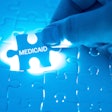
An ongoing frustration for dental practices is being told by payors that the practice did not attach a radiograph along with their claim, when the practice confirms that the attachment was included initially. Our clients tell us that to try to avoid this, they send unnecessary attachments with the claim just in case.
If the claim attachment becomes lost in transit or is not received by the payor, the delayed response time for predeterminations is only one issue that creates inefficiencies for a practice, even though this process should be little more than a routine task.
To help practices deal with these frustrations, we walk them through three common scenarios to help them ensure that payors receive these important attachments.
1. Use a secure electronic portal
Even practices that are not digitally minded can send radiographs and other images to support claims through secure electronic portals. Any images transmitted are securely stored for easy retrieval. These files are tagged with a confirmation receipt containing a tracking number generated at the time of transmission. This creates a tracking mechanism for every claim attachment sent, producing irrefutable proof that the attachment was sent to a payor.
2. Reduce predetermination response time
 Robert Patrick is the president of dental for Vyne.
Robert Patrick is the president of dental for Vyne.Another common frustration practice managers have is the amount of time it takes to receive a predetermination reply from payors. While each payor's determination is different, most have similar processes, which usually looks like this:
- A provider mails a paper claim with a radiograph, requesting predetermination.
- The payor receives the form and radiograph, and the form is scanned into an optical character recognition system.
- The claim is notated as having a radiograph, but the radiograph remains a separate copy (in most instances).
- The image is placed into interoffice mail and forwarded to a processing center where the claim is queued and a consultant matches the radiograph with the claim.
- A consultant determines the outcome of the predetermination and responds, via mail, to the provider, stating the outcome with an attached explanation of benefits.
Now, even if this process goes exactly as outlined here, it can take a long time for the practice to receive a response. With such a complicated process, documents can easily get misplaced, mistyped, or misread.
Using an electronic attachment, the payor will automatically queue the material to a processing center. Then a consultant works the queue and views the radiograph in a digital format on a secure website before making a determination and creating a message to be sent to the provider on an explanation of benefits.
This entire process can be reduced from weeks to just a few days by just using an electronic attachment system.
3. Avoid an unclear image
A third issue we hear from providers is related to when a radiograph is printed on paper and mailed with a claim. Weeks later an explanation of benefits arrives in the mail, claiming the procedure is being denied because the image was not clear enough for use.
“Electronic claim attachments can improve the efficiencies of a dental office.”
While the most pressing, this situation actually is the easiest of the three to remedy. Because a digital image of the radiograph already exists, take the next logical step and electronically transmit that image to support the claim using the electronic attachment system. Simply upload the image or capture a screen image of the record. Then send that as the attachment like any other attachment-sharing system.
In this way, the payor sees your copied image. Since it's digital, it can be enhanced. The image can be transmitted but not altered. The image is, therefore, received and its receipt can be confirmed in just seconds, which is where the power of the tracking mechanism shows itself.
Ultimately, all of this means that a claim can be processed more quickly and questions about an image can be addressed instantaneously. This also allows the practice to review the record through the electronic attachment system with the tracking number and see what the payor is seeing.
Despite the pain points mentioned here, electronic claim attachments can improve the efficiencies of a dental office. Positive outcomes might include process automation, reduced number of unnecessary emergencies that can be handled by practice staff, and freeing more time to spend on tasks directly related to patient care and growing the practice.
Robert Patrick is the president of dental for Vyne.
The comments and observations expressed herein do not necessarily reflect the opinions of DrBicuspid.com, nor should they be construed as an endorsement or admonishment of any particular idea, vendor, or organization.



















